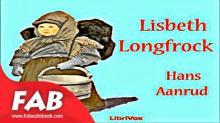


Lisbeth Longfrock
Hans Aanrud

Produced by Chris Curnow, Joseph Cooper and the OnlineDistributed Proofreading Team at https://www.pgdp.net
LISBETH LONGFROCK]
LISBETH LONGFROCK
TRANSLATED FROM THE NORWEGIAN OF HANS AANRUD
BY
LAURA E. POULSSON
ILLUSTRATED BY
OTHAR HOLMBOE
GINN AND COMPANYBOSTON . NEW YORK . CHICAGO . LONDONATLANTA . DALLAS . COLUMBUS . SAN FRANCISCO
COPYRIGHT, 1907, BYLAURA E. POULSSON
ALL RIGHTS RESERVED
PRINTED IN THE UNITED STATES OF AMERICA
The Athenaeum PressGINN AND COMPANY . PROPRIETORS .BOSTON . U.S.A.
PREFACE
Hans Aanrud's short stories are considered by his own countrymen asbelonging to the most original and artistically finished life picturesthat have been produced by the younger _literati_ of Norway. Theyare generally concerned with peasant character, and present in truebalance the coarse and fine in peasant nature. The style of speech isoccasionally over-concrete for sophisticated ears, but it is notunwholesome. Of weak or cloying sweetness--so abhorrent to Norwegiantaste--there is never a trace.
_Sidsel Sidsaerk_ was dedicated to the author's daughter on her eighthbirthday, and is doubtless largely reminiscent of Aanrud's ownchildhood. If I have been able to give a rendering at all worthy of theoriginal, readers of _Lisbeth Longfrock_ will find that the whole storybreathes a spirit of unaffected poetry not inconsistent with the commonlife which it depicts. This fine blending of the poetic and commonplaceis another characteristic of Aanrud's writings.
While translating the book I was living in the region where the scenesof the story are laid, and had the benefit of local knowledgeconcerning terms used, customs referred to, etc. No pains were sparedin verifying particulars, especially through elderly people on thefarms, who could best explain the old-fashioned terms and who had aclear remembrance of obsolescent details of saeter life. For thiswelcome help and for elucidations through other friends I wish here tooffer my hearty thanks.
Being desirous of having the conditions of Norwegian farm life made asclear as possible to young English and American readers, I felt thatseveral illustrations were necessary and that it would be well forthese to be the work of a Norwegian. To understand how the sun can bealready high in the heavens when it rises, and how, when it sets, theshadow of the western mountain can creep as quickly as it does from thebottom of the valley up the opposite slope, one must have someconception of the narrowness of Norwegian valleys, with steep mountainridges on either side. I felt also that readers would be interested inpictures showing how the dooryard of a well-to-do Norwegian farm looks,how the open fireplace of the roomy kitchen differs from ourfireplaces, how tall and slender a Norwegian stove is, built withalternating spaces and heat boxes, several stories high, and howCrookhorn and the billy goat appeared when about to begin their grandtussle up at Hoel Saeter.
_Sidsel Sidsaerk_ has given much pleasure to old and young. I hope that_Lisbeth Longfrock_ may have the same good fortune.
LAURA E. POULSSON
HOPKINTON, MASSACHUSETTS
CONTENTS
CHAPTER PAGE
I. LISBETH LONGFROCK GOES TO HOEL FARM 1
II. LISBETH LONGFROCK AS SPINNING WOMAN 12
III. LEAVING PEEROUT CASTLE 22
IV. SPRING: LETTING THE ANIMALS OUT TO PASTURE 33
V. SUMMER: TAKING THE ANIMALS UP TO THE SAETER 52
VI. THE TAMING OF CROOKHORN 68
VII. HOME FROM THE SAETER 84
VIII. ON GLORY PEAK 98
IX. THE VISIT TO PEEROUT CASTLE 113
X. SUNDAY AT THE SAETER 129
XI. LISBETH APPOINTED HEAD MILKMAID 139














